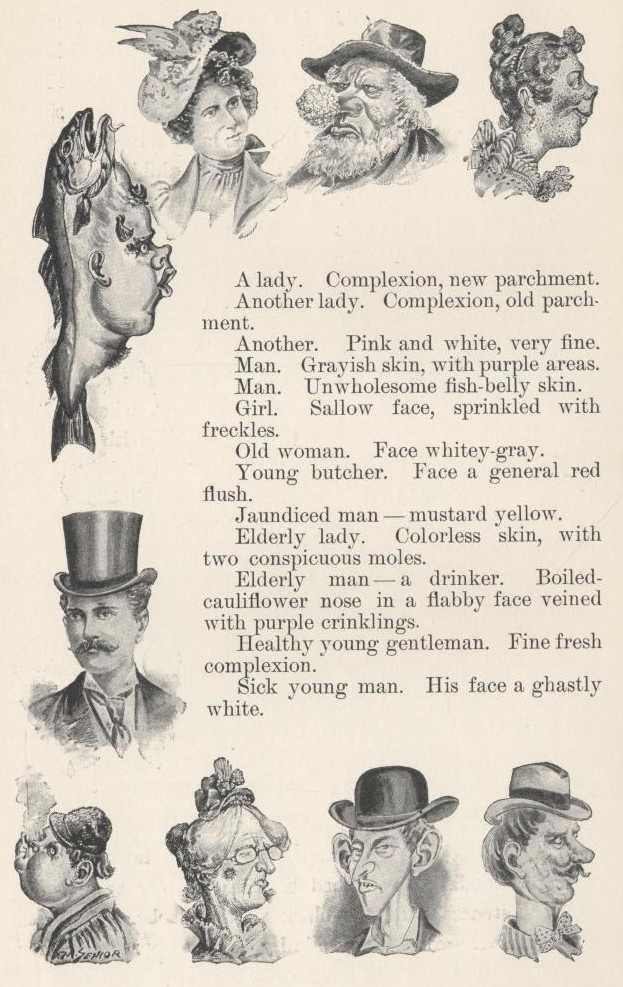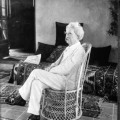One of the constant oddities of living in India is the fair skin obsession. Despite the efforts of many campaigns, there seems to be no end to the tight hold of the message that fair skin = beauty.
The odd thing is not that the Indian media prefers one type of skin tone; it’s that it is the opposite skin tone I grew up associating with beauty. As much as Indian mothers don’t want their daughters out in the sun too much, people across the ocean are willingly laying in coffin-like structures to get rid of their fairness and make their skin look “healthy”.
But this strangeness is not a modern phenomenon. Let’s return back to hearing Mark Twain on India for his insights into comparing colors in India and abroad. This excerpt comes from when he was attending the coronation of a prince in Rajasthan. I’ve added bold text to my favorite quotes.
[Taken from The Complete Works of Mark Twain: Following the Equator, Volume 2, Harper and Brothers: New York, 1925.]
When we arrived at the bungalow, the large hall on the ground floor was already about full, and carriages were still flowing into the grounds. The company present made a fine show, an exhibition of human fireworks, so to speak, in the matters of costume and comminglings of brilliant color. The variety of form noticeable in the display of turbans was remarkable. We were told that the explanation of this was, that this Jain delegation was drawn from many parts of India, and that each man wore the turban that was in vogue in his own region. This diversity of turbans made a beautiful effect. I could have wished to start a rival exhibition there, of Christian hats and clothes. I would have cleared one side of the room of its Indian splendors and repacked the space with Christians drawn from America, England, and the Colonies, dressed in the hats and habits of now, and of twenty and forty and fifty years ago. It would have been a hideous exhibition, a thoroughly devilish spectacle. Then there would have been the added disadvantage of the white complexion. It is not an unbearably unpleasant complexion when it keeps to itself, but when it comes into competition with masses of brown and black the fact is betrayed that it is endurable only because we are used to it. Nearly all black and brown skins are beautiful, but a beautiful white skin is rare. How rare, one may learn by walking down a street in Paris, New York, or London on a week-day–particularly an unfashionable street–and keeping count of the satisfactory complexions encountered in the course of a mile. Where dark complexions are massed, they make the whites look bleached-out, unwholesome, and sometimes frankly ghastly. I could notice this as a boy, down South in the slavery days before the war. The splendid black satin skin of the South African Zulus of Durban seemed to me to come very close to perfection. I can see those Zulus yet–‘ricksha athletes waiting in front of the hotel for custom; handsome and intensely black creatures, moderately clothed in loose summer stuffs whose snowy whiteness made the black all the blacker by contrast. Keeping that group in my mind, I can compare those complexions with the white ones which are streaming past this London window now: A lady. Complexion, new parchment.
Another lady. Complexion, old parchment.
Another. Pink and white, very fine.
Man. Grayish skin, with purple areas.
Man. Unwholesome fish-belly skin.
Girl. Sallow face, sprinkled with freckles.
Old woman. Face whitey-gray.
Young butcher. Face a general red flush.
Jaundiced man–mustard yellow.
Elderly lady. Colorless skin, with two conspicuous moles.
Elderly man–a drinker. Boiled-cauliflower nose in a flabby face veined with purple crinklings.
Healthy young gentleman. Fine fresh complexion.
Sick young man. His face a ghastly white.
No end of people whose skins are dull and characterless modifications of the tint which we miscall white. Some of these faces are pimply; some exhibit other signs of diseased blood; some show scars of a tint out of a harmony with the surrounding shades of color. The white man’s complexion makes no concealments. It can’t. It seemed to have been designed as a catch-all for everything that can damage it. Ladies have to paint it, and powder it, and cosmetic it, and diet it with arsenic, and enamel it, and be always enticing it, and persuading it, and pestering it, and fussing at it, to make it beautiful; and they do not succeed. But these efforts show what they think of the natural complexion, as distributed. As distributed it needs these helps. The complexion which they try to counterfeit is one which nature restricts to the few–to the very few. To ninety-nine persons she gives a bad complexion, to the hundredth a good one. The hundredth can keep it–how long? Ten years, perhaps.
The advantage is with the Zulu, I think. He starts with a beautiful complexion, and it will last him through. And as for the Indian brown –firm, smooth, blemishless, pleasant and restful to the eye, afraid of no color, harmonizing with all colors and adding a grace to them all–I think there is no sort of chance for the average white complexion against that rich and perfect tint.
A lady. Complexion, new parchment.
Another lady. Complexion, old parchment.
Another. Pink and white, very fine.
Man. Grayish skin, with purple areas.
Man. Unwholesome fish-belly skin.
Girl. Sallow face, sprinkled with freckles.
Old woman. Face whitey-gray.
Young butcher. Face a general red flush.
Jaundiced man–mustard yellow.
Elderly lady. Colorless skin, with two conspicuous moles.
Elderly man–a drinker. Boiled-cauliflower nose in a flabby face veined with purple crinklings.
Healthy young gentleman. Fine fresh complexion.
Sick young man. His face a ghastly white.
No end of people whose skins are dull and characterless modifications of the tint which we miscall white. Some of these faces are pimply; some exhibit other signs of diseased blood; some show scars of a tint out of a harmony with the surrounding shades of color. The white man’s complexion makes no concealments. It can’t. It seemed to have been designed as a catch-all for everything that can damage it. Ladies have to paint it, and powder it, and cosmetic it, and diet it with arsenic, and enamel it, and be always enticing it, and persuading it, and pestering it, and fussing at it, to make it beautiful; and they do not succeed. But these efforts show what they think of the natural complexion, as distributed. As distributed it needs these helps. The complexion which they try to counterfeit is one which nature restricts to the few–to the very few. To ninety-nine persons she gives a bad complexion, to the hundredth a good one. The hundredth can keep it–how long? Ten years, perhaps.
The advantage is with the Zulu, I think. He starts with a beautiful complexion, and it will last him through. And as for the Indian brown –firm, smooth, blemishless, pleasant and restful to the eye, afraid of no color, harmonizing with all colors and adding a grace to them all–I think there is no sort of chance for the average white complexion against that rich and perfect tint.
Beauty will always be in the eyes of the beholder, and everyone will always wish their skin was at least a slightly different color. But, here is some encouragement for you if you wish your skin was more “fair”.
Mark Twain thinks we are ugly.





[…] Mark Twain on Fair Skin […]